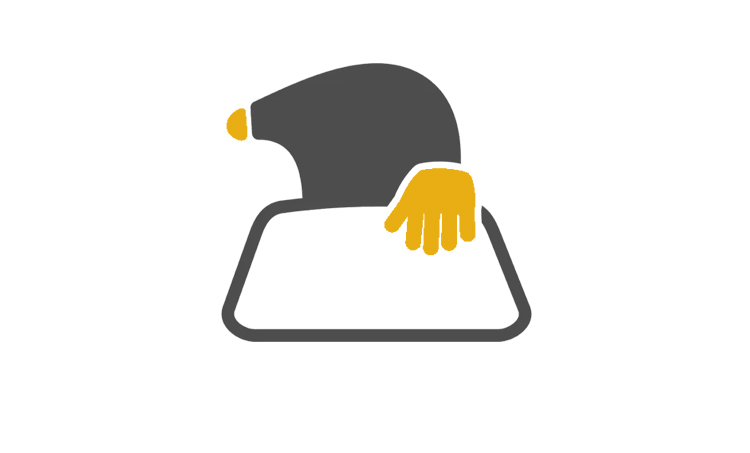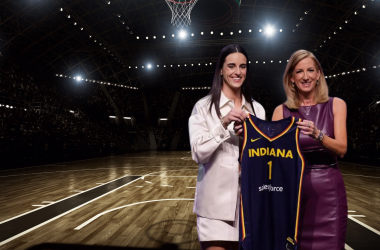Walk down any block near a softball diamond in late spring and you’ll hear the soundtrack of a small business boom. Espresso machines hissing, hotel lobby bells chiming, and the soft thud of a branded tee sliding into a shopping bag. The surge in interest around women’s sports, softball in particular, isn’t just filling bleachers, it’s filling tip jars and cash registers. And as the sport sets attendance records and anchors travel itineraries, small businesses across the country are quietly turning those moments into momentum.
Momentum you can measure
Women’s sports as a whole are on a tear. Nielsen’s 2025 sports outlook flagged women’s leagues as one of the sector’s strongest growth engines, citing rapid gains in audience and sponsor interest. A huge opening for brands and local businesses who move quickly. In softball, that macro trend is tangible. Stanford’s “Big Swing” at Stanford Stadium shattered the NCAA single-game softball attendance record this spring with 13,207 fans. Proof that the sport can stage marquee, city-shaping events.
Then there’s Oklahoma City, the sport’s de facto capital. The Women’s College World Series (WCWS) now pulls well over 100,000 fans across the week, with officials pegging the citywide economic impact in the tens of millions each year. USA Softball’s CFO estimated $30–$35 million tied to the 2025 event window and $40–$50 million in annual softball-related impact. Local tourism leaders routinely project $25 million around the WCWS alone. That’s not abstract GDP, it’s hotel nights, restaurant covers, rideshares, and retail receipts.
A sidewalk-level case study: Greenville, North Carolina
Greenville hosts the Little League Softball World Series each August, and nearby storefronts feel it immediately. “On those days, we typically see about 45 people coming through the store,” said Mathew Pizzo, who manages Holistic Co., a local wellness shop. Just down the street, Ariana Niehaus at Uptown Nutrition noted a distinct mix of out-of-towners and locals, along with a spike in gift-card purchases from visiting families. It’s a tidy flywheel. Travelers discover a shop between games, buy now, and leave a future visit behind in the form of a gift card.
And it goes beyond local. Small businesses on the national level are cashing in on the craze too. Players need custom jerseys, bats, gloves, and other equipment for events. Many tournaments have added pin trading to the itinerary. Each team designs their own custom softball pins and the players trade them with each other in-between games. A fun tradition that requires businesses to provide these pins on short turnaround times.
Oklahoma City: the week that supercharges a year
At Devon Park and the surrounding Adventure District in Oklahoma City, the WCWS is the Super Bowl of repeatable tourism. City leaders talk about “visitor assets” that didn’t exist a decade ago. New family friendly hotels, new restaurants, new reasons to wander after the last out. One name that comes up often is The National in downtown OKC. It’s a restored landmark hotel that’s now part of the city’s hospitality pitch when WCWS rolls around.
Even at the neighborhood level, you can see how the event reshapes foot traffic. Adventure District promoters highlight nearby attractions and late-night spots to keep crowds circulating. This year they were literally telling fans, “After you wrap up your games, go by Boombox Beach Club and play a couple rounds of indoor beach volleyball.” That’s a local operator turning a national championship into a nightly pipeline.
For tourists within a 10–15-minute radius there are coffee bars, taco stands, ice cream shops, screen-printers, short-run merch sellers and everything else that enters into the playbook to anchor a “softball week” bundle (think of a limited-edition flavor or cup, a team-color pastry box, or a same-day tee with a neighborhood motif) and meet demand where it’s peaking.
Pro softball’s pop-up economy
Softball’s professional tier is also building predictable demand albeit a bit slower than youth and college. In suburban Chicago, Athletes Unlimited (and now the AUSL) committed to the Parkway Bank Sports Complex in Rosemont, steps from a 200,000-square-foot entertainment district with 15 dining and activity venues. For restaurant groups and owner-operators, that five-year lease extension is a calendar you can plan staffing, specials, and sponsorships around, rather than a one-off weekend.
Because the ballpark sits inside an entertainment cluster where bowling, comedy, indoor skydiving, and family dining are readily available, game days behave like built-in “restaurant weeks.” Operators who treat them that way (menus before first pitch, post-game live-music sets, kids-eat-free innings promos) convert game attendance into shared traffic across tenants.
The stats behind the story (and why they matter on Main Street)
Audience scale is real, not hype. Women’s sports are posting record attendance and viewership. Softball’s single-game record now sits above 13,000. When a sport crosses out of “niche” and into “city-wide,” it changes the math for businesses.
Tournament formats create repeatable peaks. Multi-day softball events (youth, college, or pro) concentrate visitors for 3–10 days. In OKC, officials consistently model eight- and nine-figure annual softball impact. That’s enough to justify seasonal hiring and pop-up SKUs built around the week.
Local examples show how to capture spillover. Greenville’s Holistic Co. and Uptown Nutrition didn’t wait for foot traffic, they tuned hours and offers to game schedules and leaned into gift cards to extend spend beyond tournament week. OKC’s Boombox Beach Club capitalized on the late-night window, positioning itself as the “after the game” stop.
Playbook: turning fans into customers
Merch on demand. Pop-up printing or limited-run designs sell when fans want souvenirs that feel local. In OKC for instance, the rise of same-day shirt shops means a neighborhood retailer can launch a micro-collection for the WCWS and be “live” within hours. Pair a quick-turn tee with a latte to boost basket size.
Tournament-hour menus. Fans eat early and late. Add a pre-first-pitch breakfast burrito, a grab-and-go cold brew, or shareable post-game plates and make the hours explicit on social media. Greenville’s foot-traffic pattern suggests that clarity plus convenience wins.
Welcome-back offers. Gift cards and QR-signups convert a one-time visit into a second sale. Staff should have a simple script: “If you liked today’s special, scan here and we’ll send you our next tournament menu and a locals-week coupon.”
Neighborhood teaming. Cluster with two or three nearby shops to offer a “fan crawl” (coffee → lunch → dessert) that rewards multi-stop receipts. In entertainment districts like Rosemont, that kind of cross-tenant packaging is low-lift and high-yield on game days.
The takeaway
When a women’s sports calendar gets big, the small things start to matter. Who opens an hour earlier, who stocks the right sizes, who prints the clever tee, who tells visitors what to do after the seventh inning. The growth curve in women’s sports isn’t an abstraction; it’s the difference between a quiet Thursday and a line out the door.
Softball, in other words, doesn’t just build champions, it builds communities of small business owners who learn to merchandise moments. Whether it’s a quickly made t-shirt to celebrate a big win or some fancy trading pins to share among new friends, the growth of the sport is a huge opportunity for clever entrepreneurs.






